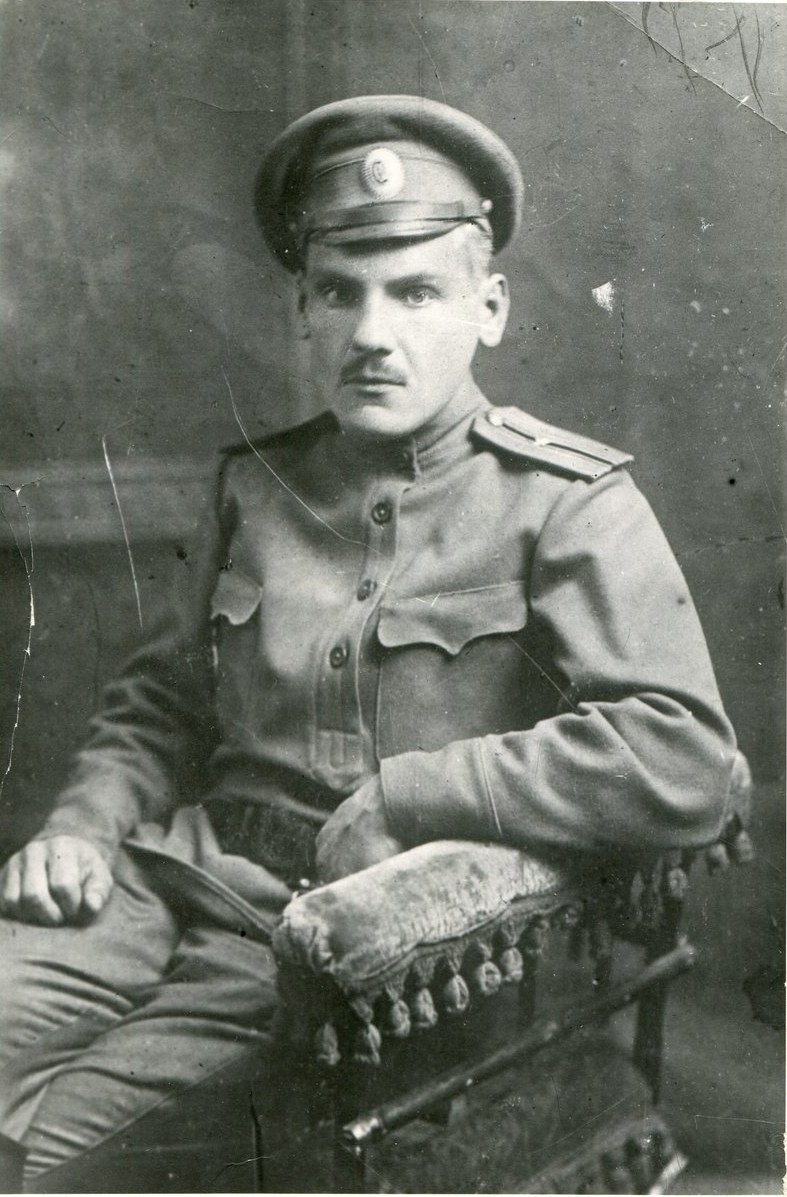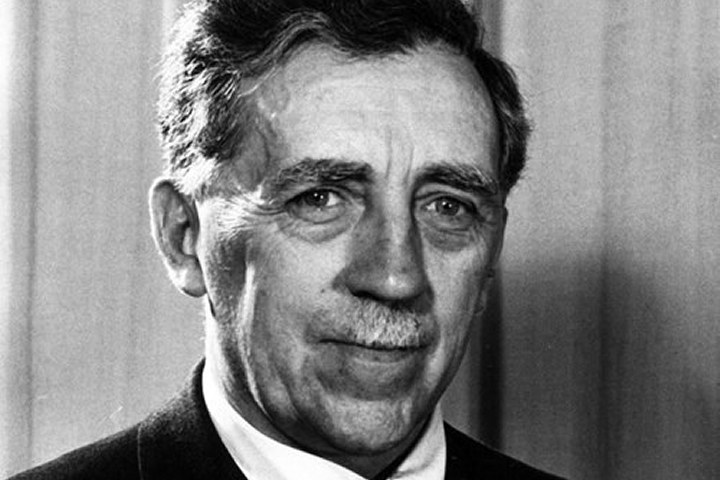Players from Prague
Recently André Schulz published an article about Fedor Bohartichuk which I read repeatedly and with great interest. Many years ago I had conversation about Fedor Bohatirchuk with former World Champion Boris Spassky, who had met Bohartirchuk in Canada. I collect (in modest fashion) old and antiquarian chess books, and I have always considered Bohartirchuk's book My way to Vlassov and to the Prague Manifesto as eminently readable. It is a book without chess diagrams, perhaps because Bohartirchuk was more of a doctor of radiology and less a chess professional.
As an amateur he played in the Canadian Championships several times and it is a pity that no one has ever measured his IQ. But he was certainly clever enough not to return to the Soviet Union with General Vlassov after World War II. He found a new home in Canada. According to my information his daughter wanted to marry a Canadian officer which also helped him on his life's journey.
Clock handicap simul
While preparing the "Prague Manifesto" Bohartirschuk showed his great strength by winning a clock handicap simul against eight players from Prague with 7½ : ½. I decided to take a closer look at the eight players. Did I know them all? What happened to them (chesswise)?
1. Ferdinand Krtichka, 1892-1951 (Master Class)
Several times participant of the Czechoslovakian Championships. He was an active member of my first chess club, Slovan Kladno, which I joined as a five-year old boy. I, and all the seniors from Kladno and environs, were present when he was laid to rest. All the men shook hands with a lady in black and I, too, gave her my little hand. Our "Ferda" still lives in the memory of the chess circles of Kladno.
2. Vasil Bacinsky (A Master from Prague)
"Je suis docteur en droit", an elderly elegant man addressed me during a tournament in San Bernadino (Switzerland). Then he tried it in Czech. He probably also made it. Not to Canada but to Switzerland. But how and in which year?
At the Swiss Team Championship I met a much younger Bacinsky. His son? No, his grandson, I am almost certain. As far as I know his descendant is also a passionate chess player. If he happens to come across this article more information about Vasil Bacinsky would be very helpful and welcome.
3. J. Runza, 1900-? (Master Class)
For me, a mysterious figure. During my active time J. Runza no longer existed. I did research but in the Czechoslovakian Little Encyclopedia (the edition from 1989) his name cannot be found. But browsing through copies from 1946 to 1947 of the Czechoslovasky Sach chess magazine I was successful. J. Runza was a strong master from Prague who took part in the Czech Championship in Ostrava 1946. But all in all he had only moderate success in chess.
4. Karel Prucha, 1901-1980 (Master Class)
An enthusiastic organiser and chess promoter. He was a known expert for the Sicilian Dragon and I even had the chance to attack him with my pawns in one tournament game. Maybe he loved the Dragon fianchetto with g7-g6 so much because he liked to fly dragon kites at the banks of the Moldova in Prague when he was a little boy. He published chess leaflets and supported junior chess for many years. From 1945 to 1953 he was captain of the national team and for his whole life he was a faithful member and also captain of Dynamo Praha, one of the best Czechoslovakian teams ever.
Volume one of the DVD deals with 9.Bc4, White's sharpest option, and shows how Black can counter this ambitious try by White with the main lines of the Soltis variation (12.h5), which was played by Magnus Carlsen regularly as well.
5. Dr. Milan Bartosek , 1913-? (Master Class)
A professor of mathematics by profession. A member of Slavie Vysoke Skoly (the University Team). For him chess was a full-time hobby and his motto might have been olympic: "Participating is more important than winning!" I do remember his small glasses and his thick hair well. I was also trembling when the team result depended on his game.
6. Jiri Podgorny, 1912-1987 (Master Class)
He definitely liked to play correspondence chess where he managed to become an International Master. But he was also a remarkably strong tournament player. His small pocket chess set was always in reach. He wrote good articles for Czechoslovensky Sach and for Fernschach. His books Prag-Moskau 1946 (1947), Jan Foltys (1956), Könige der Schachwelt (1974) are of good quality. At the Chess Olympiad Skopje 1972 he was captain of the women's team and we shared a room. When I hear his name I always remember his black briefcase, his black umbrella, and his pocket chess set.
7. Cenek Kottnauer, 1913-1996 (International Master)
"Kentauer" (his nickname in Prague) — self-taught, winner of Zlin (Bata tournament) 1943, where the cream of Czechoslovakian chess was present. He had a very good understanding of the Sicilian with Black. In the match Prague vs Moscow 1946 he won against Smyslov, Kotov and Simagin and was the best Czech player. At the Chess Olympiad Helsinki 1952 he scored 12½ / 15 on board four; he won gold for the best individual result on board four. In 1953 he chose England as his new home and was the first in the wave of Czech emigrants. In London he was to teach many talented players (among them Nigel Short, Julian Hodgson, Stuart Conquest). The first time we talked was in Hastings 1966/7. (see Hort stories, part 3). Later we also met at Freddy Kornassel's in the chess club Tal Lichtenberg, where he played on first board. Here's a fine Sicilian by him:
8. Ludek Pachmann, 1924-2003 (International Grandmaster)
The youngest participant in the handicap simul. A politician? A chess player? Both! Strangely enough there a number of books by Ludek Pachmann — but, as far as I know, none about him. I promise to publish an article about my countryman this year. My dedication and my intention are firm...
Back then Ludek Pachmann annotated all games of this clock simul — in Czech. My friends Jan Michalek and Radek Turnier found these annotations and translated them into German — here they are.
But I liked the game between Ludek Packman and Fedor Bohatirschuk with its complicated middlegame so much that I took a close look of my own. Here are my comments:
Visiting Nikolai Krylenko
Bohartirschuk's book My way to Vlassov and to the Prague Manifesto was published 1978 in San Francisco 1978 at SBONR (a Ukrainian publisher). It remains a mystery for me why the book has never been translated into English or German. If you start the book early in the evening you will keep reading till early morning. Radiology and chess were Bohartirschuk's fate.
I take the liberty to give a free translation of pages 106-108, "Arrest of the Secretary of the Ukrainian chess section Mr. S and the intervention by N.W. Krylenko", from the book to give readers an inkling of the "terrible times".
It is 1935 and F. Bohatirschuk has the floor:
After returning from the tournament in Moscow 1935 to Kiev unpleasant news were awaiting me. The secretary of the chess section N.S. had been arrested and his wife desparately asked me for help. N.S. was father of five children, a very humble and quiet person. I have never noticed that he attended to anything else than chess and his family.
He and political activities against the Soviet power? It was useless to probe the local institutions. I decided, so to speak, to grab the bulls by the horns and to ask for mercy in Moscow. The great commissioner of justice N. Krylenko was also president of the Soviet Chess Federation and it was known that he occasionally helped chess players who were in trouble.
I knew his reputation. His processes against the "enemies of the state" in which he set the "bar of punishment" very high gave me a lot of food for thought... He lived not far from the centre in a multistorey, ordinary house in which other high state officials also had their domicile and their offices.
The guard who apparently knew about me let me into the building and took the elevator with me. An elevator — what a luxury in these times! The flat was very modestly furnished. Until then I had seen N. Krylenko only from afar during his appearances at the Soviet Chess Federation. Seen up close the procurator was only of medium height but with a tendency for stoutness, and equipped with clearly apparent qualities of a leader.
His face could be described as friendly, almost good-natured. Neither did his mild movements and manners fit to the cruelty against the generals and officers who had fallen into his hands. In short, I was face to face with a an executioner with a human face, a character whom until then I had only known from literature. A fanatic procurator without any inhibition, always ready to declare and sign death sentences. But I thought that at the same time he could cry bitterly should his own cat or dog be severely injured or to mourn them for a long time.

The young Nikolai Krylenko | Unknown photographer
Krylenko listened to me, and then he went into the adjoining room where the "government telephone" was. After a quarter of an hour he returned and told me: "I spoke to the president of the Ukranian NKVD (the People's Commissariat for Internal Affairs), Balickij, unfortunately too late. Your secretary N.S. just made a confession." In his mouth the word "confession" sounded very strange. Of course, Krylenko was very well acquainted with all methods the investigative judge might employ. I could even detect a trace of pity in his words.
What crimes did the secretary N.S. actually commit? But my mission was still successful. Over the phone the procurator recommended the "soft" treatment and N.S. was only sent for two years to Siberia.
I am convinced that without the intervention of the People's Commissioner he would have gotten ten years in Siberia followed by a ban on staying in Kiev.
On page 120, second paragraph, Bohartirschuk writes:
I made the following agreement with my wife: if I was not there and the NKVD visited us at home, she would put a bigger flower pot with a certain plant on the balcony. By that I at least hoped to gain time and to have a headstart. Maybe I would be able to find a place to hide and to consider my next move. No one can imagine what we had to go through.
Epilogue
But Krylenko did not escape the irony of fate. During one of Stalin's next purges he became a victim. Historical documents prove that a NKVD task force arrested him on January 31, 1938, in his dacha, and that he was later tortured until he "voluntarily" confessed everything. The trial against the "enemy of the state" Krylenko lasted only 20 minutes. On July 29, 1938, he was shot.
True or not? In the book about the Moscow tournament 1935, Krylenko wrote a foreword that is full of socialist optimism. After his liquidation the censors even tried to neutralise his foreword, that is to remove the relevant pages from the book. Should you have the original tournament book in Russian in your library, please have a look! If the book starts at page 9, you now know why...
It's a pity but my colleague Boris Spassky did not invite me to visit Bohartirschuk in Canada. A real pity! I would have asked him a thousand-and-one curious questions.
Translation from German: Johannes Fischer
Links
























